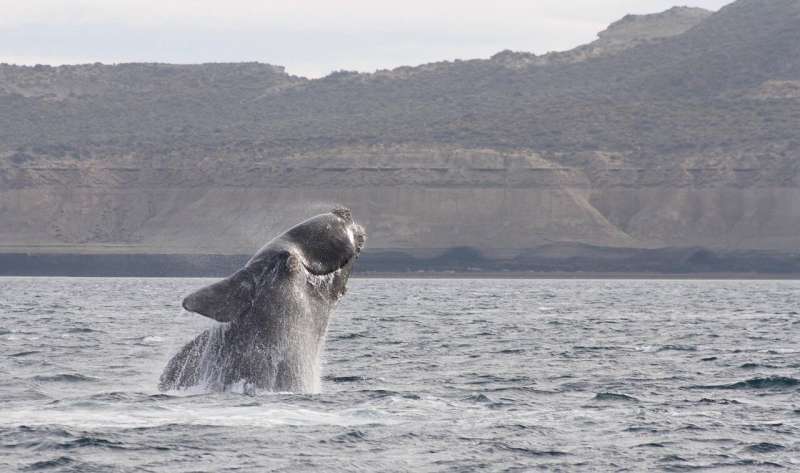This article has been reviewed according to Science X's editorial process and policies. Editors have highlighted the following attributes while ensuring the content's credibility:
fact-checked
peer-reviewed publication
trusted source
proofread
Are marine protected areas safeguarding the Tohorā—the southern right whale?

Marine protected areas are one widely used conservation tool intended to reduce anthropogenic pressures, particularly fishing activities. However, their effectiveness is rarely evaluated, or they are found to provide insufficient or only partial protection from threats such as fisheries interactions.
A University of Auckland—Waipapa Taumata Rau study has used a three-year data set on whale and vessel movements in southern Aotearoa New Zealand, including the subantarctic islands. The research is published in the Journal of Environmental Management.
"Our research focused on how well MPAs in NZ waters encompass important southern right whale habitat and how well they protect the whales from vessel traffic," says Dr. Leena Riekkola.
"As this population is slowly recovering, we are seeing more whales in southern waters, including outside of their winter breeding season.
"To understand how SRWs use New Zealand waters, we analyzed satellite telemetry data from 29 whales tagged at the Auckland Islands / Maungahuka between 2009 and 2022. We identified two previously unknown and currently unprotected areas that were used by SRWs for important behaviors such as foraging, socializing, or resting," said Riekkola.
Different types of marine protected areas prohibit certain activities under NZ law, with international recognition of southern NZ as Important Marine Mammal Areas.
"Overall, the marine protected areas encompassed only a small portion (~10%) of southern right whale habitat, while the IMMAs captured ~57%, meaning there is insufficient legal protection for the whales from human activities," said Associate Professor Emma Carroll who is the project lead.
By combining whale locations and vessel tracking data during the peak breeding period for SRWs (June to October), we found high spatiotemporal overlap between whales and vessels within several marine protected areas, suggesting the whales could still be vulnerable to multiple anthropogenic stressors even when within areas designated for protection.
"These areas, which are important habitat for the whales but overlap with human activities, need to be considered as the whale population, as well as vessel fleets and offshore industrial activities increase," said Carroll.
More information: Xuelei Zhang et al, Effectiveness of marine protected areas in safeguarding important migratory megafauna habitat, Journal of Environmental Management (2024). DOI: 10.1016/j.jenvman.2024.122116
Journal information: Journal of Environmental Management
Provided by University of Auckland



















